Visions of Future Cities
August 10, 2008
A couple weeks ago, I distinguished between what I call the Traditional City, and a 20th-century fever dream which needs a better name than the “Radiant City.” Let’s call it the Hypertrophic City.
The Traditional City vs. the “Radiant City”
Other posts in this series:
December 2, 2007: Let’s Take a Trip to Tokyo
October 7, 2007: Let’s Take a Trip to Venice
June 17, 2007: Recipe for Florence
July 9, 2007: No Growth Economics
March 26, 2006: The Eco-Metropolis
Both are visions of “density,” as opposed to the suburban fantasy in which we imagine we are independent farmers or, if you’ve got the coin, landed gentry (this means you own the land, but someone else does the farming). However, from there they differ completely. The Traditional City is generally a walkable, human scale construct, of buildings no higher than about seven stories, about the limits of height without elevators. You could have buildings higher than that today, as we now have elevators. Probably the best example of very tall buildings integrated within a Traditional City format is Lower Manhattan. (Really Narrow Streets, buildings side-by-side without useless plazas and greenery and they look good from ground level.) I’ve summed up the essential characteristic of the Traditional City as:
Really Narrow Streets
Note that “traditional” cities in the United States do not fit this description. That is because they are not really Traditional Cities, but rather 19th century cities. They display 19th century hypertrophism instead of 20th century hypertrophism. I will talk about 19th century hypertrophism — a reflection of the first century of the Industrial Revolution — at some later time. (In practice, note that they have Really Wide Streets — not as wide as today’s, but very wide compared to a Traditional City like Venice or Paris.)
The reason that the Traditional City is walkable (and almost impossible to drive in, ideally), is that they were built at a time when people walked. This format can be easily upgraded today with trains (especially underground trains), so that you can walk to and from the train. Even horses and wagons were relatively rare, basically used as commercial vehicles. Why would an urban dweller own a horse? They don’t have to pull a plow. As for “human scale,” this basically means that they are usable and enjoyable to a human. You wouldn’t think this would need to be explained. We shouldn’t make cities that are not “human scale” for the same reasons that we shouldn’t make pants with 100 inch waistlines — because they are not useful. The Traditional City sums up what just about every city in the world looked like, from ancient Sumeria (3500 BC) up to the beginning of the Industrial Revolution at approximately 1800 AD. Machu Picchu is built with roughly the same design as Pompeii.

Machu Picchu (Peru). Built in roughly 1450 AD. Just try to drive here. Ha ha ha.
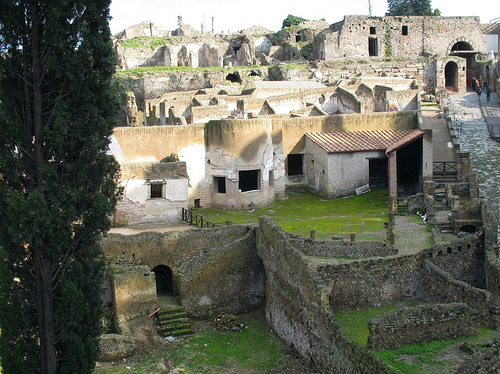
Pompeii (Italy). Destroyed by volcanism in 79 AD.
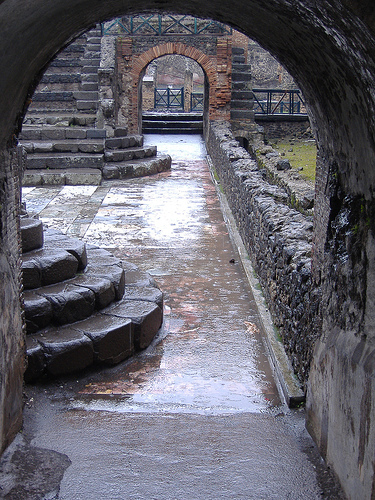
Lovely little corner in Pompeii. Life without parking lots!
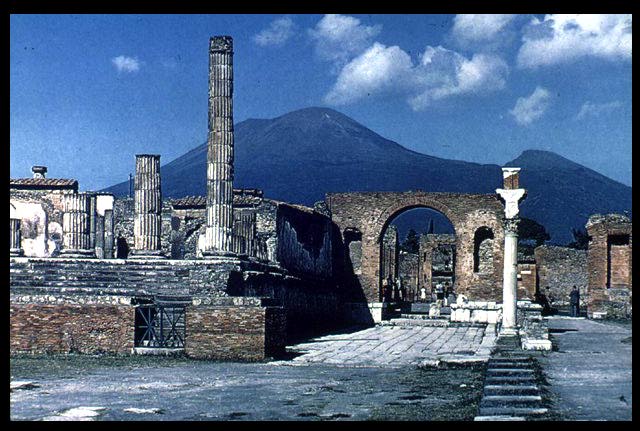
Pompeii. From 3000 ft elevation, looks like grey mush.
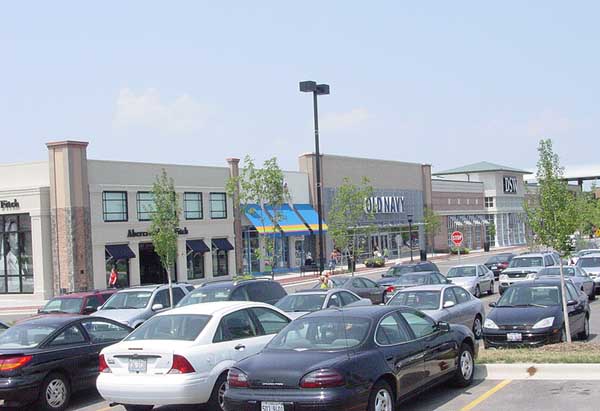
What does it mean when a city destroyed by a volcano 1,929 years ago has more charm and beauty than the cities we build today? I think it means that we have a problem.
Traditional Cities don’t look like much from the helicopter view –which is the view from which the Hypertrophic City is normally conceived. The Traditional City, from the helicopter viewpoint, looks like grey mush. That is because its details and features are meant to be used and enjoyed from a distance of a few feet to, at maximum, a couple hundred feet, in other words the distances experienced by the urban pedestrian. If you took a great work of literature, let’s say Shakespeare’s Macbeth, and printed it out in normal size type, and taped it to a wall, and looked at it from a distance of ten feet, it would also look like grey mush. It’s because you aren’t looking at it right. Cities should be looked at from ground level, not the helicopter.
Now, I am not saying that there is nothing fun at all that happens in the Hypertrophic City. I am sure many people can recall some good times in Las Vegas or Dubai. But, typically, what this represents is: with enough money, women, and mood-altering substances, you can have a good time anywhere, even in a Hypertrophic City. But then, with enough money, women and booze/drugs, you could have a pretty good time on a hog farm too. So what. Indeed, these places are so inherently dissatisfying that it is no surprise that people compensate with women/booze/drugs. On a broader note, the interiors of the Hypertrophic City are generally fine, and not necessarily much different than the Traditional City. A nice restaurant can be pretty much the same in each, once you get in the door. At least, it is not vastly out of scale, with three-foot-wide dinner plates or something like that. Actually, in practice, the improved aesthetic environment of the Traditional City tends to lead to greater aesthetics on every level, such as interiors, clothing, furniture and home furnishings, etc. Why do you think suburbanites all wear khakis and blue denim shirts? The kind of clothing that would be appropriate for a Venice is completely out of place in a suburban shopping center, for the same reason you don’t wear a ballroom gown to a scrap metal yard, to take an extreme example, even if you like ballroom gowns. You need a ballroom!
Whew! Now we’re finally warmed up for the real subject of this essay, which is the Hypertrophic City idea that eventually led to the Hypertrophic City in real life. This was a product of the 1920s and 1930s, their “City of the Future.” This is really odd, because, by 1920, there were endless examples of really beautiful, successful cities throughout the world. Just think of Paris, Rome, etc. etc. It was not a problem that anyone had to fix. But, in virtually all avenues of aesthetics, after World War I Western Civilization suffered something like the equivalent of an epileptic seizure, and started to quiver and drool and choke on its tounge and crap in its pants. Architecture and City Design were not spared.
This website is a really wonderful collection of images from the 1920s and 1930s that showed the collective imagination of what the City of the Future would look like.
Let’s look at a few ourself.
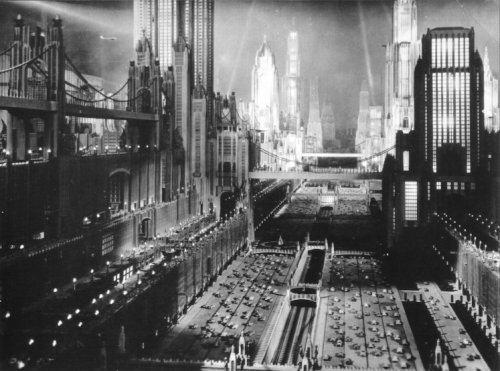
This image comes from a film released in 1930 called Just Imagine. It was supposed to be New York in 1980. No city in 1930 actually looked like this. In it we find all the essential characteristics of the Hypertropic City. Note the helicopter perspective. All the buildings are super-huge monoliths. There is essentially no pedestrian space at all. In the middle, we have, instead of a Really Narrow pedestrian street, or even a pedestrian grand plaza, a superhighway with (count ’em) twelve lanes of traffic in each direction, plus another three lanes of traffic on a parallel highway (wasn’t 24 lanes enough?). It looks like there’s a pair of train tracks in the middle too. Where are these cars going? Where will they park? Wouldn’t it be easier to replace this highway with one single underground subway line? How would you get from one building to another without a car? What would it be like to walk in this city? Would you want to live here? Raise kids there? Did anybody ever ask these questions?
Do you now understand why Robert Moses wanted to tear down Greenwich Village and put a freeway there — and thought this was perfectly sensible and wise?
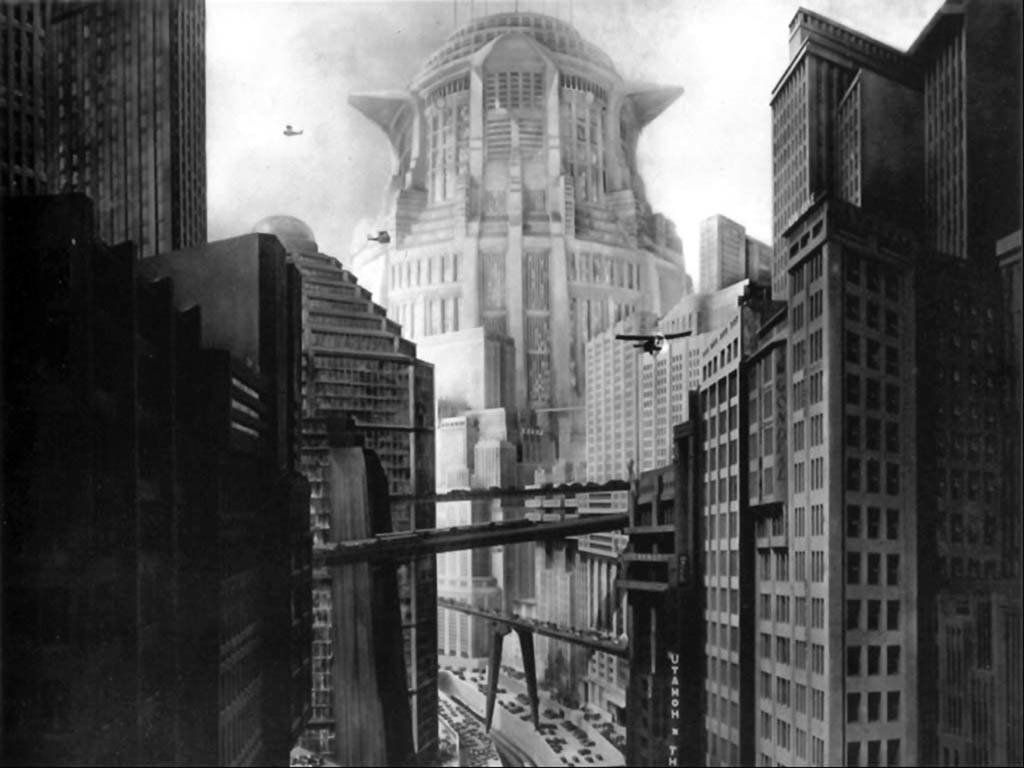
A vision from the 1926 film Metropolis. Basically identical. Mammoth buildings, gigantic roadways, and no place at all for a “pedestrian,” which is modern-speak for a person.
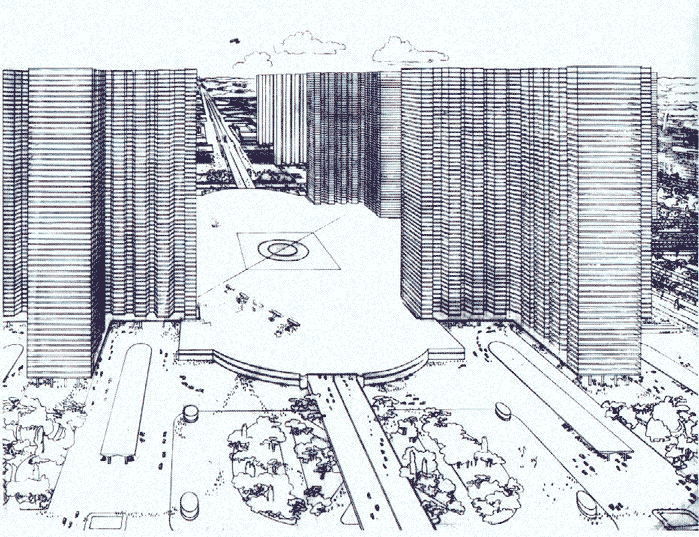
This is Le Corbusier’s “A Contemporary City of Three Million”, from 1923. Megabuildings. Monster roadways. (It shows the super-giant size here that that little twin strip in the middle is acutally a superhighway with about six lanes in either direction.) The obligatory helicopter perspective. The people are tiny specks in giant barren plazas. It looks like the plaza is about half a mile wide. You could probably fit all of central Florence in that empty patch of nothingness. Maybe it is a Zeppelin landing pad? Which is a real sensible thing to put right in the middle of your city. By the way, those megabuildings are supposed to be worker’s housing.
Now, imagine you were a “worker.” In fact, you probably are. Would you want to live in this thing? It is the worker’s-housing equivalent of a chicken processing plant. When faced with this “vision of the future,” the workers rebelled. Fuck that!
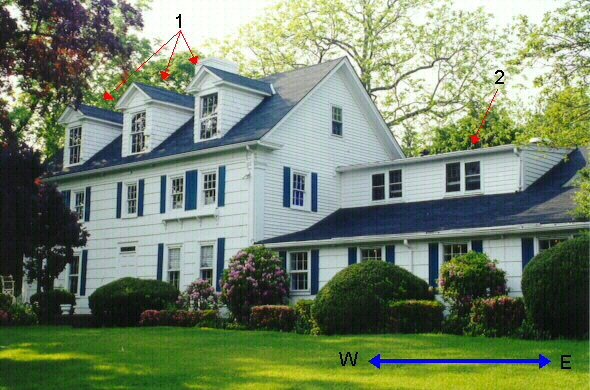
Whew! That’s better. Human scale. Comfortable, aesthetically pleasant. Walkable. Nice place to have kids. The suburban house is nice — much nicer than the Hypertrophic City — as long as you don’t leave the yard. This is a traditional ideal (more or less), and like many traditional solutions works well, but it is also a rural ideal, and doesn’t work when you try to make a city out of it. The rural ideals have a central, freestanding building with fields around, because the fields were used to grow things, raise animals, and so forth. The rural ideal typically involves as much space (biggest “yard”) possible, because land was wealth, and more land was more wealth. It should be obvious that you can’t build a city with a system in which everyone wants the biggest yard they can get.
But, back to the Hypertrophic City.
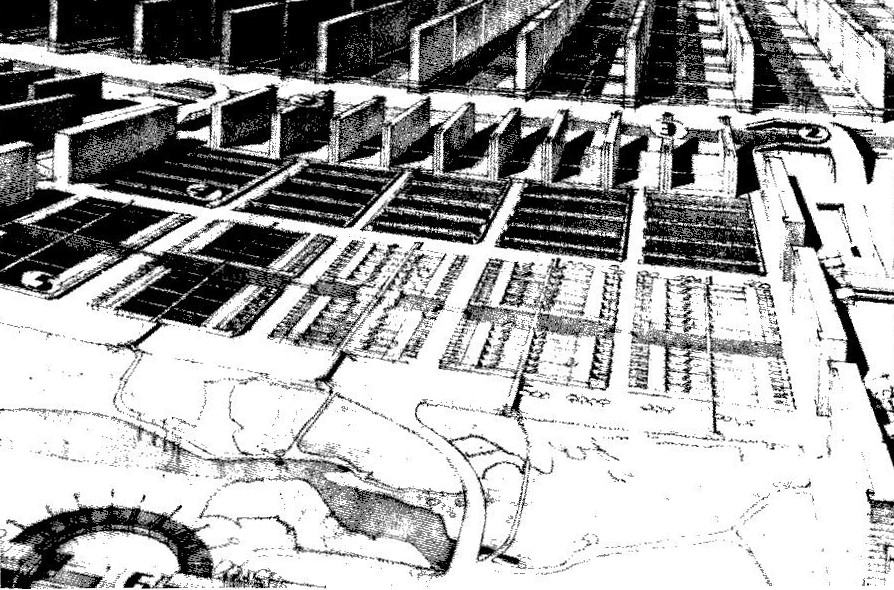
Richard Neutra’s Rush City Transformed, from 1928. In 1928, no city in the world looked like this. But, it seems eerily familiar now, doesn’t it? I probably don’t have to go on about the giant streets, lack of any street-scale detail and amenities whatsoever, the pedestrian wasteland, the giant blank spaces between buildings, and the supergigantic monolithic buildings with no architectural appeal whatsoever.
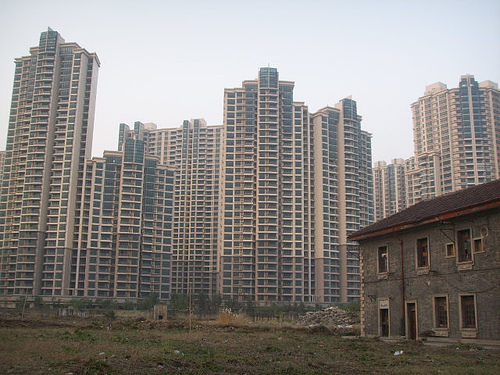
New apartments in Shanghai.
OK, I think you get the point — although, given humans’ tendency to destroy themselves, you can perhaps never make the point enough. I will finish with a few more images from the Traditional City, in hopes that people will begin to run to the Traditional City when they flee the Hypertrophic City, rather than to the ersatz rural farmhouse of suburbia.
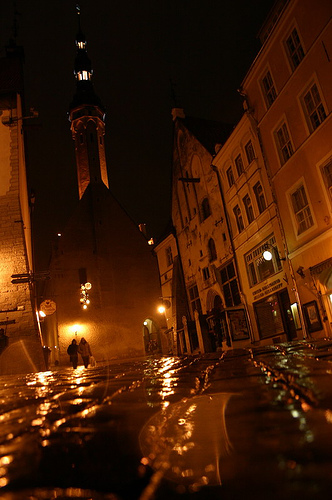
A romantic shot of Tallin, the capital of Estonia. Just try to take a shot like this in Dubai. Where are the CARS? Also, note that we have now left Helicopter Perspective and returned to real life.
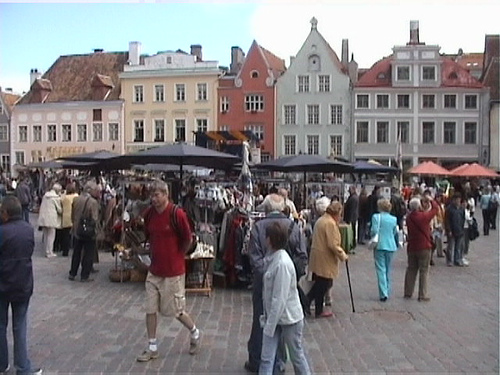
Tallin by day. This plaza market seems like a nice place for a Saturdy morning. Sure beats 24 lanes of traffic. Also note the disappearance of the Monster Monolith buildings. I call them “Great Pyramids.”

A traditional street in Kyoto today. Getting rarer, unfortunately.

Kyoto.
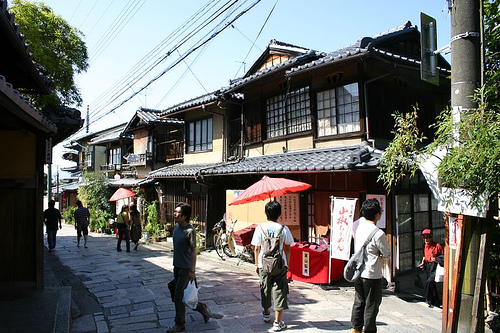
Kyoto.
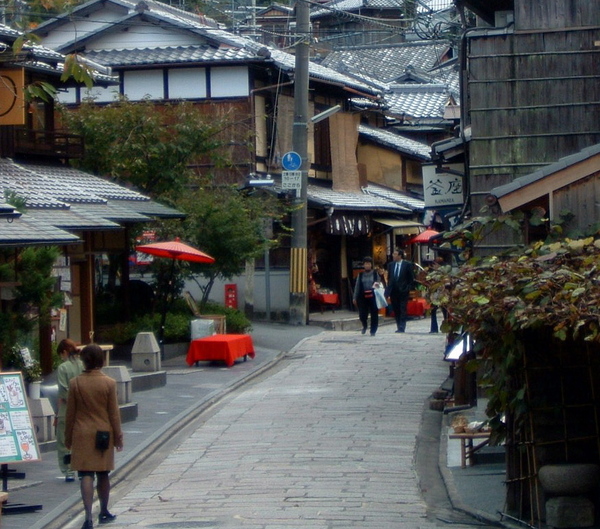
Kyoto. Hey, this is 2008! Where are the CARS???
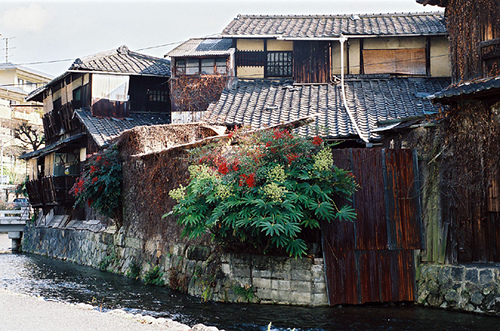
Kyoto.
I think we can see that the Traditional City can offer just as much charm and artistry as the rural farmhouse. Actually, it can provide more. The problem with the rural farmhouse is that, although it can be nice if you don’t leave the yard, and a welcome refuge from either the Hypertrophic City or the suburban freeway/stripmall/office park/parking lot, you have to do all the work yourself. Everything within the boundaries of the yard is your responsibility. Grunt if you understand what I’m talking about. It’s a lot of work! And expensive! In Kyoto, to take one example, you can also enjoy a wonderful environment, but someone else does all the work. You just walk out of your small apartment, and … enjoy.
So, now I hope you can begin to think about the Traditional City, instead of the Hypertrophic City, when you think about cities. What we think about has a funny way of appearing in real life about twenty years later.
* * *
Catherine Austin Fitts has some interesting views on the recent housing bailout bill. It’s worth a look.
http://solari.com/blog/?p=1340

